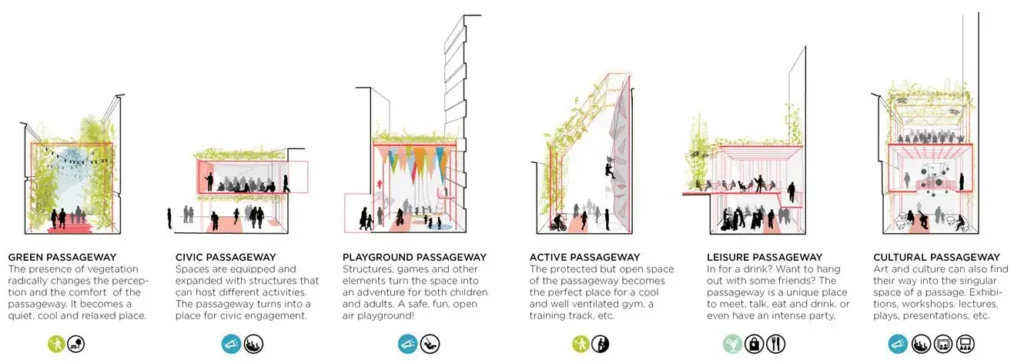The influence of architecture on society
The influence of architecture on society is profound and multifaceted. Architecture is not just about constructing buildings; it shapes the way people interact with their environment, influences cultural identity, affects social behaviour, and reflects societal values. Here are several ways in which architecture impacts society:
Cultural Identity:
Architecture serves as a tangible expression of a society’s cultural identity. Traditional architectural styles, materials, and construction techniques often reflect local customs, beliefs, and historical influences. For example, the pyramids of Egypt symbolize the ancient Egyptian civilization’s religious beliefs and monumental architecture. Similarly, the intricate carvings and vibrant colors of traditional Indian temples showcase the country’s rich cultural heritage. In contemporary society, architects and urban planners may incorporate elements of cultural identity into their designs to foster a sense of place and belonging for residents and visitors.
Social Interaction and Behavior:
In the face of rapid urbanization, the demand for sustainable development practices in India has become more pressing than ever. Adaptive reuse aligns seamlessly with the principles of sustainability by repurposing existing structures rather than opting for demolition and reconstruction. This approach minimizes environmental impact, reduces construction waste, and optimizes the use of available resources—a critical consideration as India strives for ecologically responsible urban development.

The design of buildings and public spaces profoundly influences social interaction and behavior. Well-designed public spaces, such as parks, plazas, and community centers, provide opportunities for people to gather, engage in recreational activities, and build social connections. For instance, the High Line in New York City transformed an abandoned railway into a vibrant linear park, fostering community engagement and economic revitalization in the surrounding neighborhoods. Conversely, poorly designed spaces with limited accessibility, lack of amenities, or inadequate safety measures may deter people from socializing and contribute to feelings of isolation and exclusion.
Urban Planning and Development:
Architecture plays a crucial role in shaping urban landscapes and influencing patterns of development. Urban planners work alongside architects to design sustainable, livable cities that prioritize accessibility, affordability, and environmental stewardship. Concepts such as mixed-use development, transit-oriented design, and green infrastructure aim to create more walkable, interconnected communities while reducing carbon emissions and resource consumption. Projects like the Masdar City in Abu Dhabi showcase innovative urban planning strategies, including renewable energy integration and pedestrian-friendly design, to address the challenges of rapid urbanization and climate change.

Economic Impact:

Architecture has significant economic implications, driving employment opportunities, investment, and tourism revenue. The construction industry employs millions of people worldwide and contributes to economic growth and development. Iconic architectural landmarks, such as the Sydney Opera House or the Guggenheim Museum Bilbao, attract millions of tourists each year, bolstering local economies through spending on accommodations, dining, and entertainment. Additionally, architectural innovation and entrepreneurship create opportunities for businesses specializing in design, engineering, construction, and real estate development.
Psychological Well-being:
The design of buildings and environments can profoundly impact people’s psychological well-being and quality of life. Access to natural light, ventilation, and green spaces has been linked to improved mood, productivity, and cognitive function. Biophilic design principles, which incorporate elements of nature into built environments, promote stress reduction, emotional well-being, and connection to the natural world. Hospitals designed with healing gardens, schools with ample daylighting, and workplaces with flexible, collaborative spaces prioritize the mental and physical health of occupants, enhancing their overall satisfaction and performance.
Political and Symbolic Significance:
Architecture often serves as a symbol of political power, cultural identity, and historical memory. Government buildings, monuments, and memorials convey messages of national unity, sovereignty, and collective identity. For example, the Statue of Liberty in the United States represents freedom and democracy, while the Forbidden City in China symbolizes imperial authority and dynastic legacy. Architectural projects commissioned by political leaders, such as grandiose palaces or monumental complexes, can reinforce political ideologies, shape public perceptions, and legitimize authority.
Technological Innovation:

Advances in architectural technology and construction methods have transformative effects on society and the built environment. Sustainable building practices, such as passive design strategies, green roofs, and renewable energy systems, reduce energy consumption, mitigate climate change, and enhance resilience to natural disasters. Digital fabrication technologies, such as 3D printing and robotic construction, revolutionize the design and construction process, enabling greater precision, efficiency, and customization. Collaborative platforms and Building Information Modelling (BIM) software facilitate interdisciplinary collaboration and communication among architects, engineers, and contractors, streamlining project delivery and improving outcomes.
Bibliography:
Ching, Francis D. K. Architecture: Form, Space, and Order. John Wiley & Sons, 2014.
Gehl, Jan. Cities for People. Island Press, 2010.
Knox, Paul L., and Peter J. Taylor. World Regional Geography. Pearson, 2014.
LeGates, Richard T., and Frederic Stout. The City Reader. Routledge, 2015.
Oliver, Paul. Dwellings: The Vernacular House Worldwide. Phaidon Press, 2003.
Pallasmaa, Juhani. The Eyes of the Skin: Architecture and the Senses. John Wiley & Sons, 2005.
Ratti, Carlo, et al. The City of Tomorrow: Sensors, Networks, Hackers, and the Future of Urban Life. Yale University Press, 2016.
Shibley, Robert G. Planning, Design, and Construction of Health Care Facilities. John Wiley & Sons, 2010.
Steffen, Alex. Worldchanging: A User’s Guide for the 21st Century. Harry N. Abrams, 2006.
Zeiger, Mimi. Tiny Houses in the City. Rizzoli, 2017.